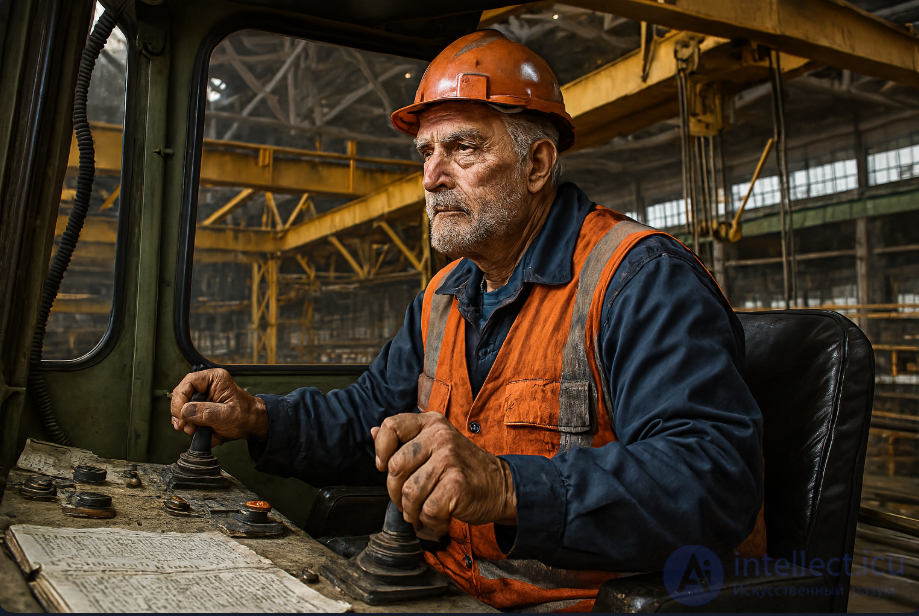Lecture
1. General characteristics of the profession
Performs lifting, moving, loading, unloading, transportation of parts, assemblies, blocks to the place of assembly. Controls the correctness of the use of a grabber lifting devices, quality slinging. It monitors instrument readings (load indicators, inclinometer, etc.) and sling signaling gestures. Checks the technical condition of the crane (mechanisms, brakes, ropes, crane tracks). In accordance with the qualifications awarded, the driver works with loads of different weights. Communication with the slinger and installer is carried out using loudspeaker devices.

2. Requirements for the individual characteristics of a specialist
Physical endurance, good coordination of movements, high tactile sensitivity, accurate eye (linear, angular, dynamic), good hand-eye coordination, hearing, ability to concentrate and distribute attention, discipline, composure, caution.
3. Medical contraindications
Employment of persons suffering from diseases of the vestibular apparatus, organs of vision (use of glasses is not allowed), hearing loss, severe functional diseases of the cardiovascular system (hypertension, severe vascular diseases of the lower extremities), nervous system, epilepsy, diseases of the musculoskeletal apparatus, the pronounced pathology of the female genital sphere.
4. Requirements for training
Should know: safety regulations; rules slinging (fixing) of goods; sign and sound alarm. Must be able to: understand the schemes serviced cranes and mechanisms; to understand the technological processes of installation of equipment; to determine the causes of failure of the crane; own plumbing; perform maintenance and repair of the crane.
5. Related professions
The driver for the management of gantry and bridge cranes, the driver for the management of crawler and pneumatic cranes, locksmith to repair cranes.
Comments
To leave a comment
Professions and specialties
Terms: Professions and specialties